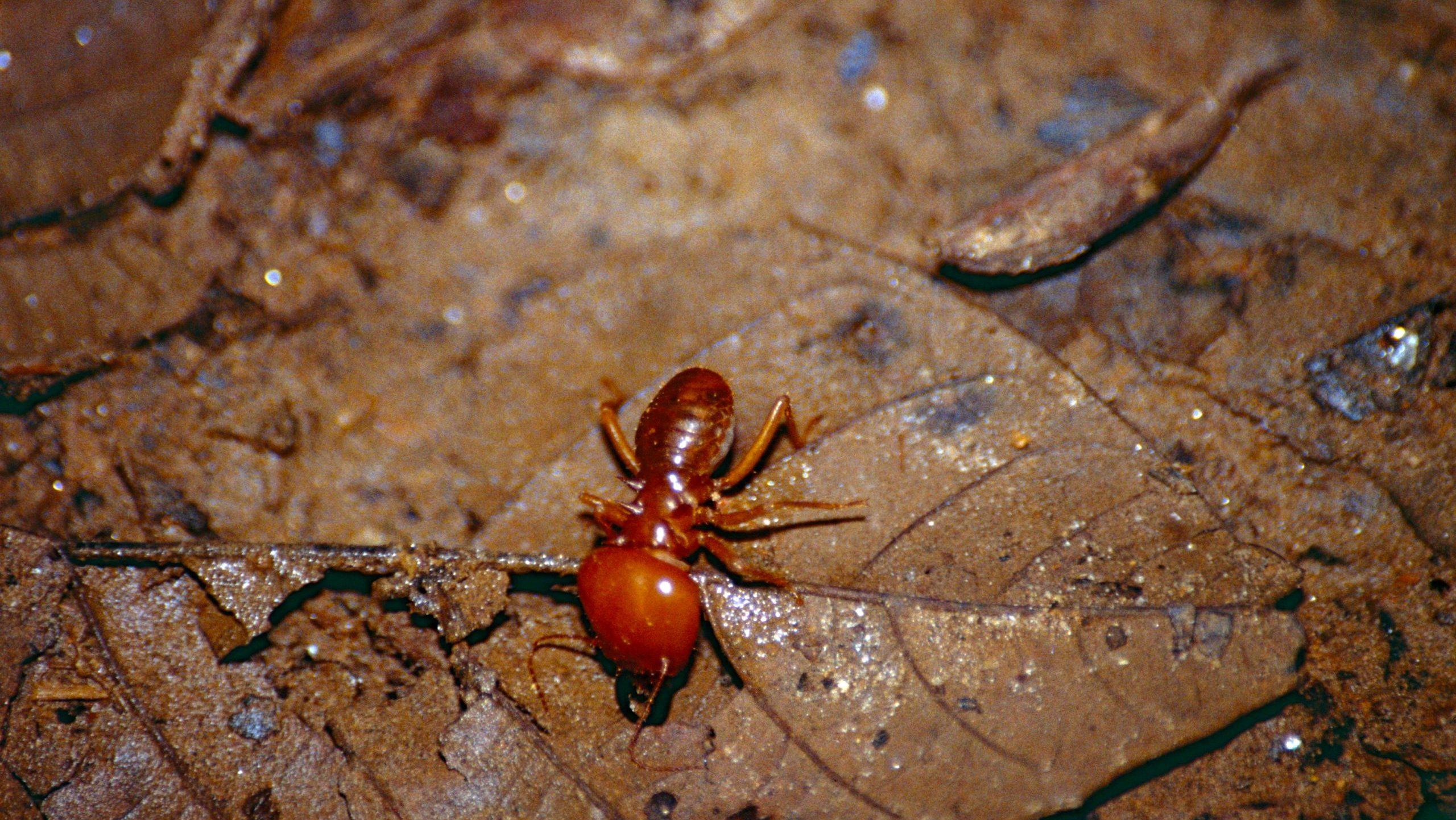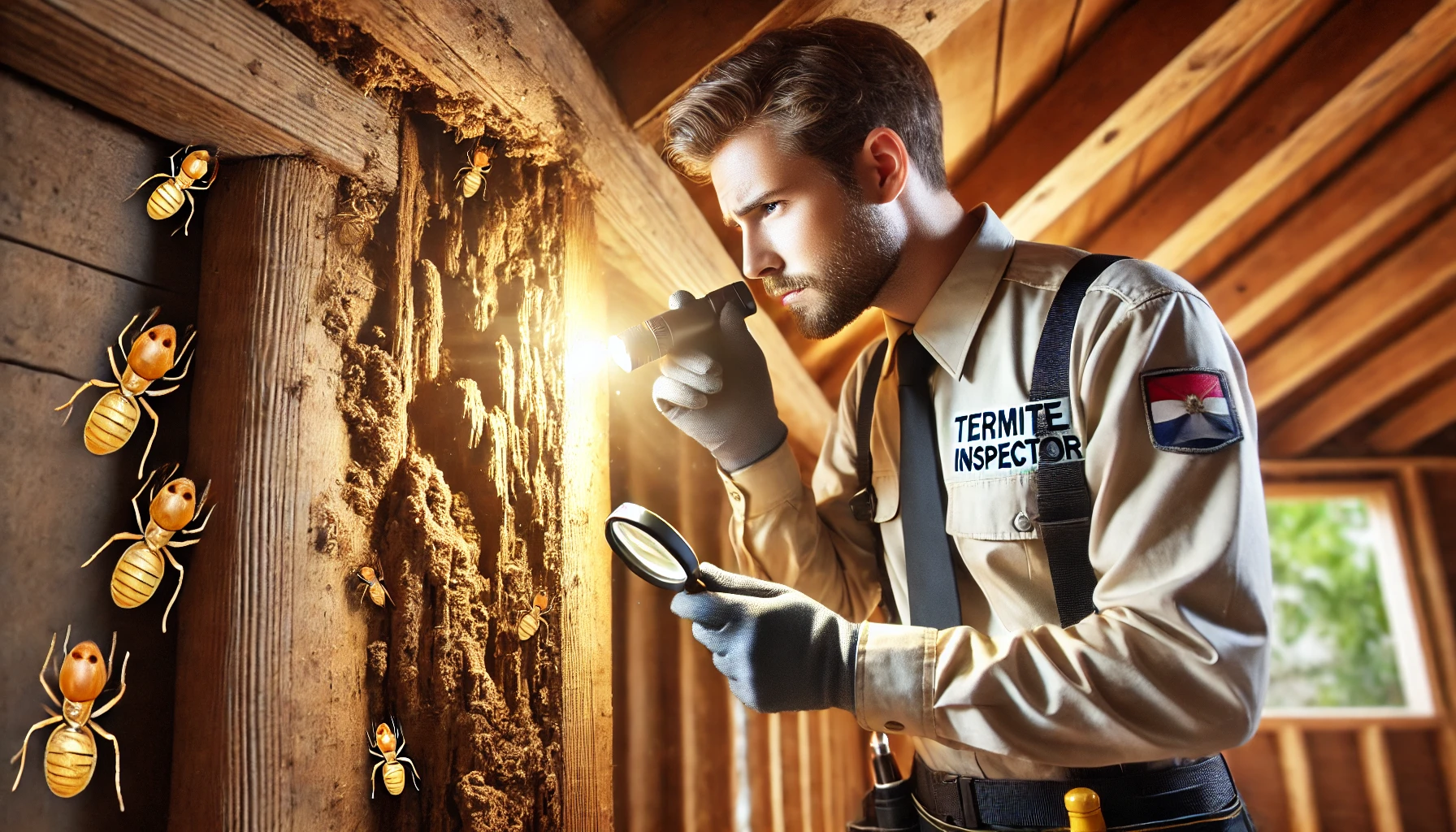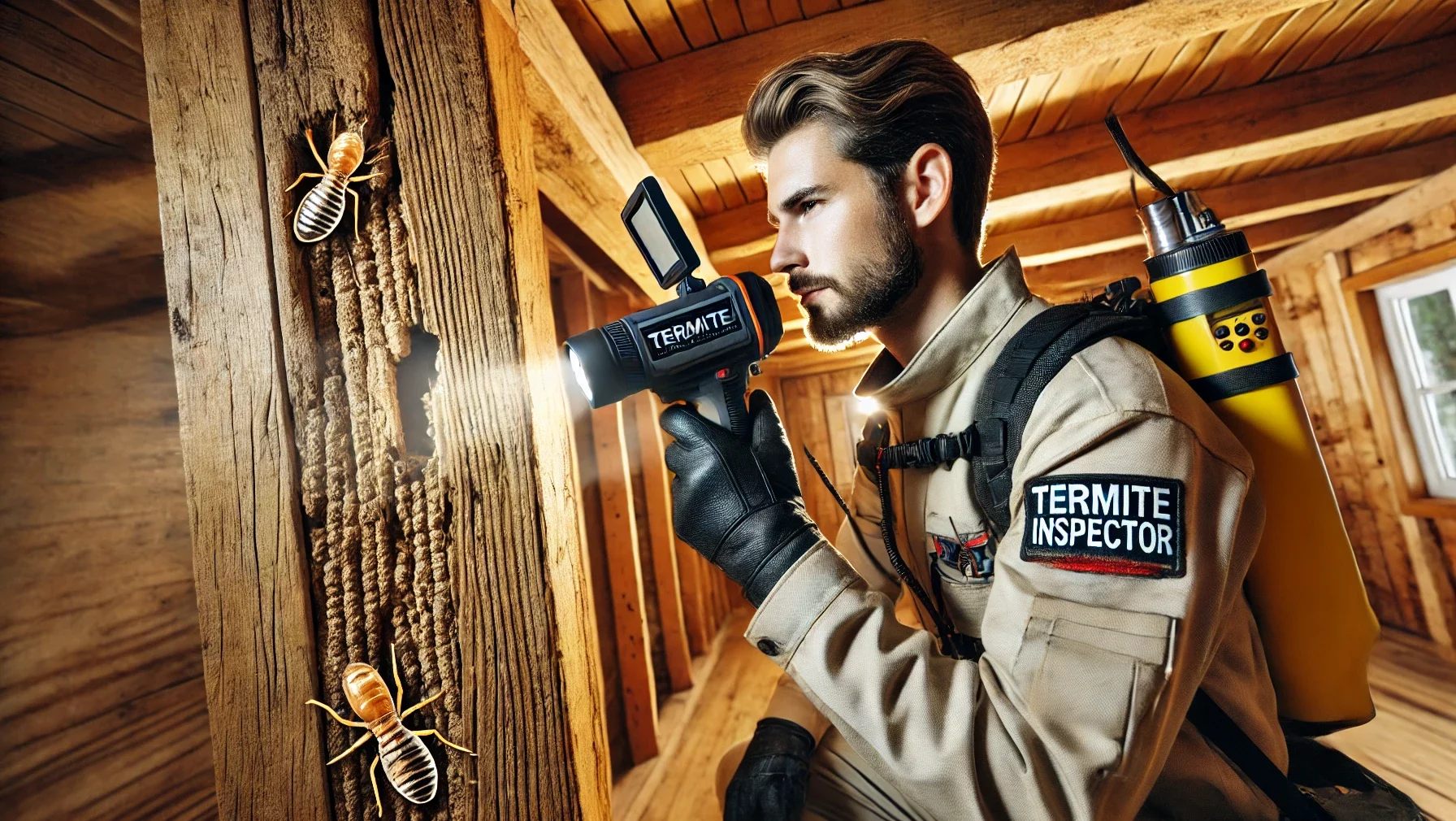Key Takeaways
- Termite inspections are essential to catch infestations early before significant damage occurs.
- The inspection process includes both interior and exterior checks, using tools like moisture meters and thermal imaging cameras for the most thorough evaluation.
- Regular inspections are a smart investment—they help you spot issues before they become expensive problems.
- If termites are found, various treatment options are available, including liquid treatments, baiting systems, and fumigation.
- Preventative steps like fixing leaks and sealing cracks can help protect your home in the long term.
 Termites are often called “silent destroyers,” and for good reason. They can silently invade your home, munching away at wood and insulation; before you know it, you’ve got significant structural damage on your hands. And here’s the thing: the damage is often already done by the time you notice them. You may not see them, but they work quietly behind the walls, beneath the floorboards, or up in the attic. So, what do you do? How do you catch them before they cause too much damage?
The answer is simple: a termite inspection. If you’re a homeowner and want to control termites, getting regular termite inspections is one of the most important things you can do to protect your home. But what exactly happens during a termite inspection? What can you expect when the pest control technician comes knocking? Let’s break it down.
Termites are often called “silent destroyers,” and for good reason. They can silently invade your home, munching away at wood and insulation; before you know it, you’ve got significant structural damage on your hands. And here’s the thing: the damage is often already done by the time you notice them. You may not see them, but they work quietly behind the walls, beneath the floorboards, or up in the attic. So, what do you do? How do you catch them before they cause too much damage?
The answer is simple: a termite inspection. If you’re a homeowner and want to control termites, getting regular termite inspections is one of the most important things you can do to protect your home. But what exactly happens during a termite inspection? What can you expect when the pest control technician comes knocking? Let’s break it down.
Why Should You Care About Termite Inspections?
We get it—termite inspections may not sound like the most exciting thing on your to-do list. But think about this: termites cause billions of dollars in damage to homes across the U.S. annually. That’s not a typo. Billions. The problem is they can be pretty sneaky. These pests live in places you don’t usually think to check, like in walls, under floors, or in crawl spaces. So, unless you’re actively looking for them, you’ll probably not see them until it’s too late. That’s where the termite inspection comes in—your early warning system, helping you catch any trouble before it gets out of hand. And trust us, the peace of mind that comes with knowing your home is safe from termites? Worth it.

Not getting a solution?
Get your free pest control estimate today!What Happens During a Termite Inspection?
Alright, let’s get into the nitty-gritty of the termite inspection process. So, you’ve scheduled the inspection. What’s next? Here’s the rundown: 1. Pre-Inspection Questions When the technician arrives, they will ask you a few questions as they’ll want to know if you’ve seen any signs of termites around your property. You might hear things like:- Have you noticed any flying insects in or around your home?
- Have you seen any holes in the wood or peeling paint?
- Are there any moisture issues, like leaks or damp areas?
Signs of Termite Damage
-
Wood Damage: Termites chew through wood like it’s their favorite snack. If the wood sounds hollow when tapped, that’s a big red flag indicating termite activity.
-
Moisture: Termites thrive in moisture-rich environments, so areas with dampness—such as around leaky pipes or clogged gutters—become prime spots for termite activity.
Common Termite Hiding Spots
-
The Basement or Crawl Space: Moisture collects in these areas, making them prime spots for termites. Look for mud tubes, visible damage, and other signs of infestation.
-
Attics: Termites can make their way up to the rafters. Technicians will inspect beams and wooden structures in the attic for any damage or signs of termite activity.
-
Wooden Furniture or Trim: While termites usually target structural wood, they may also feed on furniture or trim. Technicians will tap on wooden furniture to check for hollow areas, which indicate damage.
Tools Used for Detecting Termite Activity
-
Moisture Meters: These devices help technicians spot areas with high moisture, perfect for detecting termite activity, as termites thrive in damp conditions.
-
Thermal Imaging Cameras: Think of this as a high-tech detective tool. It helps find temperature differences inside walls, which could indicate hidden termite activity.
-
Baiting Systems: Some companies use bait stations that attract termites. If termites are detected, the technician can track their movement and provide early warning for future treatments.
 5. Termite Inspection Report
Once the inspection is over, you’ll receive a detailed report outlining the findings. If termites aren’t detected, you’ll get the green light—just make sure to keep up with regular inspections. But if termites are found, the report will outline next steps, including potential treatment options.
5. Termite Inspection Report
Once the inspection is over, you’ll receive a detailed report outlining the findings. If termites aren’t detected, you’ll get the green light—just make sure to keep up with regular inspections. But if termites are found, the report will outline next steps, including potential treatment options.
How Do You Know If You Need a Termite Inspection?
Here’s the thing: it’s not just about having an inspection when you think there might be a problem. Even if you don’t see any signs of termites, getting regular inspections’s a good idea. Experts recommend doing one at least once a year. You don’t want to wait until termites have already started damaging your home.But if you’re buying or selling a home, a termite inspection is often necessary. It’s one of those things that helps avoid future headaches. If you’re selling, you would like to make sure that the buyer doesn’t find a termite infestation after the exchange is done. And if you’re looking to buy , you don’t like to inherit a termite problem.

The Cost of Termite Inspections
Termite inspections are affordable, especially viewing the potential cost of termite damage if left rampant. Typically, a termite inspection in the U.S. costs anywhere from $50 to $300. Some pest control companies even offer free inspections, especially if you sign up for a complete pest control service package. If you’re in a termite-prone area or have already had issues in the past, spending a little on an inspection now can save you a lot in repairs down the road.Protecting Your Home from Termites
Once you’ve had your inspection, here’s the great news: there are numerous of ways to safeguard your house from termites in the future to stay safe from the fate.Preventing Termite Infestations
-
Fix Moisture Issues: Termites thrive in moisture-rich environments. Fixing leaks, establishing proper drainage, and keeping areas dry are essential to making your home less inviting to termites.
-
Seal Cracks and Gaps: Termites can squeeze through tiny cracks. Sealing gaps around windows, doors, and foundations makes it harder for them to gain entry into your home.
-
Trim Back Trees and Shrubs: Plants touching your home’s exterior create an easy path for termites. Keep trees and shrubs trimmed back to reduce the risk of infestation.
-
Consider a Termite Barrier: Some homeowners install termite barriers—either physical or chemical—as an extra layer of protection to keep termites out of their homes.
 If you feel things have gone out of control, it is advised to contact pest control professionals. Our team can provide a customized approach to protect your home effectively.
If you feel things have gone out of control, it is advised to contact pest control professionals. Our team can provide a customized approach to protect your home effectively.
Visit our Species, Control, and DIY Guide sections for additional resources on termites and ways to tackle a termites infestation.





